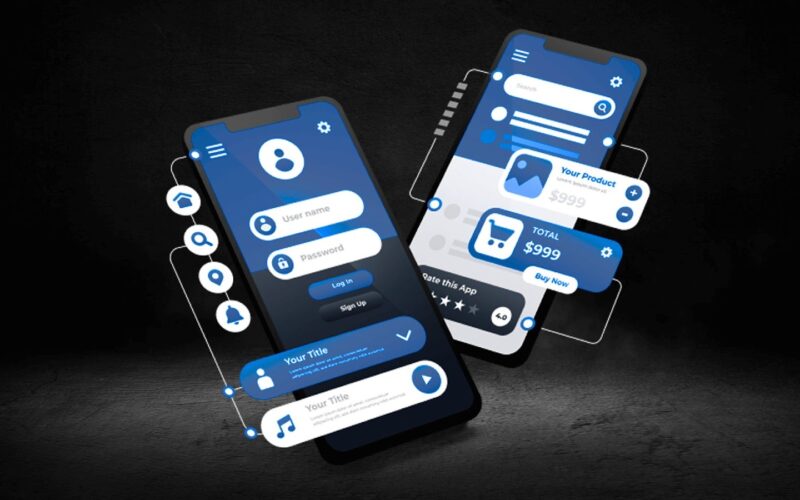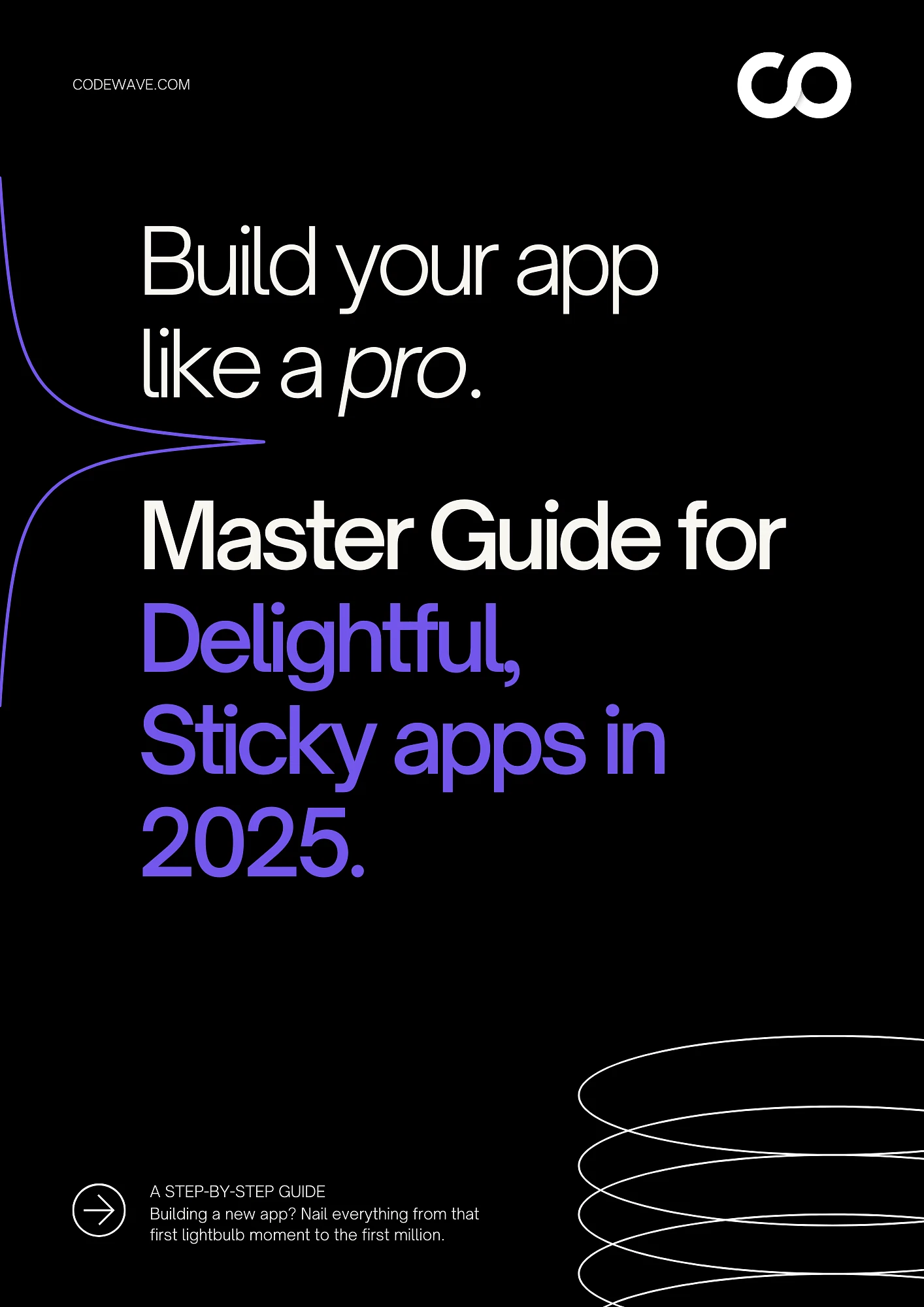Ever wondered why some mobile apps launch smoothly while others face delays, budget overruns, and scope creep?
The answer often lies in how clearly the scope was defined from the start. Without a clear and structured scope, projects are more likely to run into issues like missed deadlines, budget overages, and endless revisions. But what exactly does it mean to define the mobile app development scope effectively?
Simply put, it’s about setting clear expectations and defining all the necessary elements that will guide your app development journey – from the features you want, to the tech stack you’ll use, and the timelines for each phase. Defining the scope up front can save you time, resources, and headaches.
In this blog, we’ll break down what goes into defining a mobile app development scope, common challenges, and the best practices that can ensure your project stays on track and delivers the desired results.
TL;DR
- Defining your mobile app development scope upfront ensures better alignment with business goals, prevents scope creep, and keeps the project within budget.
- Start with must-have features that solve your app’s core problem. Everything else can be addressed in later updates.
- Consider the trade-off between cross-platform development (faster, cost-effective) and native development (better user experience, higher cost).
- Utilize the Agile methodology to enable iterative development, incorporating user feedback to remain adaptable and meet evolving market demands.
- Early testing and feedback loops help refine your app, ensuring it meets user needs and delivers high engagement.
First, let’s get into the importance and essential elements that need to be defined to get the project right from the start.
Understanding the Mobile App Development Scope: What It Includes
When you’re setting out to develop a mobile app, defining the scope isn’t just about setting a few basic parameters. It’s about carefully outlining every element that will determine the success or failure of your project.
A clear and comprehensive scope is what aligns the vision, features, timelines, and resources of your app. Here’s how you should approach defining it:
1. Features and Functionalities
The core of your app is to show what it actually does. However, defining these features effectively is all about clarity. The real question is: what problem is your app solving, and how do its features drive that solution?
You need to prioritize functionalities based on what’s non-negotiable for your MVP (Minimum Viable Product), and what can be considered for future updates.
- For example, if you’re building a fintech app, security and ease of transactions will be your primary focus.
- If you’re building an eCommerce app, then robust product search, payment integration, and an intuitive checkout process might top your list.
By detailing the functionality upfront, you avoid costly changes and prevent adding unnecessary features that might dilute your app’s purpose.
2. Platforms
Choosing the platform for your app is more than just deciding between iOS, Android, or a cross-platform solution. This decision significantly impacts your app’s user experience, design, and technology stack.
- If you’re aiming for cross-platform development, you’re investing in tools like React Native or Flutter, which allow you to build one codebase for both platforms.
While it saves time and costs, it might also limit certain native features and performance optimizations that come with developing separately for iOS and Android.
- On the flip side, choosing native development means a more customized experience for each platform but comes at the cost of higher development time and budget. For startups or SMEs, it’s crucial to balance platform needs with the available budget.
This decision often involves a tradeoff between time-to-market and user experience, so evaluate both based on your project’s unique needs.
3. User Experience (UX)
No matter how feature-rich or technically advanced your app is, user experience will be the deciding factor for retention. A beautifully designed app with a poor UX can quickly frustrate users and lead to abandonment.
Defining UX at the start of your project means mapping out every interaction, screen, and button placement before any code is written.
- Think about your app’s flow – how easy is it for users to navigate from one action to the next? What are the pain points they might encounter?
- Also, consider performance here. Is your app lightweight enough for quick loading times, or is there unnecessary bloat?
For example, if you’re building a healthcare app, minimizing the number of clicks required to schedule appointments or view test results enhances user satisfaction and reduces friction.
4. Tech Stack
The technology stack is what will enable your app to perform seamlessly and scale over time. It’s vital to make the right choice here from the outset. A poor tech stack choice can lead to app crashes, slow loading times, and security vulnerabilities.
If you’re building an enterprise-level app, for example, you’ll want a tech stack that supports complex integrations, data security, and scalability.
- You also need to think about the backend (databases, server environments) and frontend (frameworks, programming languages).
- If you’re using React Native for cross-platform development, you’ll need to pair it with the correct backend to ensure it performs well under the weight of user traffic.
The tech stack not only determines performance but also affects your long-term ability to support and update the app efficiently. Choosing a scalable and secure tech stack now will save you from re-engineering later on.
While defining the scope is essential, it’s not always straightforward. Let’s look at the common hurdles that can derail your app’s development and how to avoid them.
Common Challenges in Defining the Mobile App Development Scope
Defining the mobile app development scope is not without its challenges. While it’s essential for keeping projects on track, several obstacles can arise that, if not addressed early on, can derail timelines, budgets, and overall project success.
Here are the most common issues you’ll face and how to overcome them:
1. Scope Creep
Scope creep refers to the gradual expansion of a project’s scope without proper control. It often starts with minor changes, such as “Let’s add this feature, it’ll be easy,” but can snowball, leading to significant delays and increased costs.
If you begin without a well-defined scope or proper change management processes, you’ll find yourself in a situation where new features and tweaks accumulate throughout the development process.
How to sort this?
- To combat scope creep, ensure you have a clearly defined list of features from the outset and adhere to it unless necessary.
- Prioritize features for your MVP (Minimum Viable Product) and set a process for evaluating any new changes or additions to the project.
2. Unclear or Evolving Requirements
Another common challenge is unclear or evolving requirements. If the initial requirements aren’t well-defined or are constantly changing, it can be challenging to know where to start or what to focus on.
As a result, the development team may waste time working on features that don’t align with the final vision of the app, leading to frustration on both sides.
How to overcome this?
- The key to overcoming this challenge is thorough planning. Work closely with stakeholders to define and document requirements at the outset, ensuring everyone is on the same page.
- Avoid vague terms and get as specific as possible about each feature, its functionality, and its intended user experience. If requirements need to evolve, make sure they’re carefully managed and tracked to avoid disruption.
3. Budget Overruns
A poorly defined scope often leads to budget overruns. This happens when the initial scope is too vague, and additional costs are incurred as new features are added or the scope is adjusted mid-project.
It’s easy to underestimate costs when you haven’t fully scoped the project out from the start.
How to avoid this?
- To mitigate this risk, set a realistic budget based on the features, platforms, and timeline you’ve established. Be upfront about potential additional costs for any changes or upgrades down the line.
- A detailed and fixed scope will provide a much clearer picture of your total costs and ensure you stay within budget.
4. Changing Market Demands
Market demands can shift unexpectedly, especially in industries like tech, fintech, and healthcare. User preferences, regulations, or even new technologies can disrupt your development process, forcing you to rethink parts of your app or its features mid-development.
While flexibility is essential, it’s crucial to prioritize core features in the initial scope and save major pivots for later stages.
How to sort this?
- Use an agile methodology to build iteratively, allowing for adjustments while keeping the core functionality intact.
- Be prepared to evaluate market changes and ensure your app is adaptable to industry trends without requiring a mid-project overhaul.
Are you also struggling with mobile app development challenges? Let Codewave turn your concept into a high-performance, cross-platform app.
With our mobile app development services, we aim to tackle your security concerns, scalability, and user experience to create apps that meet your business goals and exceed industry standards!
Now that we’ve covered the potential challenges, let’s shift our focus to how you can proactively define a well-structured scope to ensure your app’s success.
Steps to Define the Mobile App Development Scope Effectively
Defining the mobile app development scope might seem like a daunting task, but breaking it down into clear, actionable steps can help you create a well-defined blueprint for your project.
Here are the essential steps to follow when outlining your app’s scope:
1. Define Your Goals and Objectives
The first step in defining the scope is setting a clear understanding of your goals and objectives, such as
- What problem is your app solving?
- What outcomes do you want to achieve by the end of the project?
Setting measurable goals will guide every decision you make throughout development.
- For instance, if your goal is to build an e-commerce app, your objectives might include increasing sales by 20% in the first quarter after launch.
- If you’re building a healthcare app, your goal might be improving patient satisfaction through easier appointment scheduling.
With clear objectives, you can keep your app development focused on delivering the results that matter most.
2. Identify Core Features and Functionalities
Once you’ve defined your goals, it’s time to decide on the core features your app will have. Start with your MVP (Minimum Viable Product) – the essential features that directly contribute to your app’s main functionality.
Don’t get lost in non-essential features or “nice-to-haves” that could delay development or blow your budget. Consider the user journey: how users will interact with the app, and prioritize features that enhance their experience.
- For example, in a food delivery app, core features can include a menu, order placement, payment integration, and delivery tracking.
- In contrast, features like loyalty programs or restaurant reviews can be saved for later releases.
3. Choose the Right Technology Stack
The technology stack is the backbone of your app. Choosing the right stack isn’t just about picking the latest trends; it’s about ensuring that the technology aligns with your app’s goals, expected traffic, and long-term scalability.
Start by considering your app’s architecture:
- Will you need a cloud infrastructure for scalability, or will local storage suffice?
- Will your app need real-time capabilities, requiring technologies like WebSockets?
Whether you’re opting for native development or a cross-platform solution (e.g., React Native), the technology stack must support performance, security, and user engagement.
Opt for tools that are secure, reliable, and easily upgradable for future updates.
4. Set a Realistic Timeline
Creating a timeline for your mobile app development is essential, but it needs to be realistic. The timeline should factor in every phase of the development process, from the initial design and prototyping to backend development, frontend development, and testing.
- Designing the app’s UI/UX typically takes time, so don’t rush the process.
- Similarly, proper quality assurance (QA) testing ensures that bugs and usability issues are ironed out before launch.
- A realistic timeline will also allow time for feedback and revisions without putting pressure on your team or quality standards.
5. Estimate Costs and Budget
A detailed cost estimate is crucial for staying within budget. Take into account not just development, but also design, testing, maintenance, and any additional features or tools that might arise during the process.
- Be transparent with stakeholders about potential budget increases if new features are added or the scope changes mid-development.
- Many businesses underestimate the time and cost involved in custom software development; therefore, it’s essential to have contingency plans.
Consider breaking the expenses down into categories (design, development, testing) and adding a buffer for unexpected costs.
6. Plan for Future Updates and Enhancements: Keep Scalability in Mind
The app you’re developing today will likely need future updates. It’s crucial to define scalability within your scope. Are there features you’ll want to add later on? Does the tech stack support easy updates or new features?
- For instance, you might launch with basic features but plan on adding AI-driven personalization or push notifications in future versions.
- Planning for these enhancements now will allow for smoother future development and ensure the app grows with your business needs.
Defining the scope is just one part of the equation. Let’s discuss some quick strategies for how to manage and adjust the scope throughout the development process to stay on track.
Best Practices for Managing Mobile App Development Scope
Successfully managing the mobile app development scope goes beyond just sticking to the plan. It’s about being proactive, addressing issues before they become problems, and adapting when necessary.
Here are some best practices that will help you keep your app development process efficient and aligned with your original goals:
1. Keep Communication Open and Frequent
The most common cause of scope issues is poor communication. Frequent check-ins are vital to ensure everyone is aligned and on the same page. Ensure that progress, challenges, and changes are communicated clearly and in a timely manner.
- Tools like Trello, Slack, or Asana can facilitate this by providing a centralized place for project updates. Clear, constant communication avoids costly missteps and ensures all stakeholders understand what’s happening at each stage.
2. Embrace Agile Methodology for Flexibility
With Agile development, you don’t need to be rigid about your initial scope. Instead, you work in short, iterative cycles (sprints) that allow you to adjust the app based on feedback as you go.
This keeps the project aligned with changing business needs or market trends without losing focus on core objectives.
- Think of it like recalibrating the app based on user feedback or new tech insights. Agile allows you to make smart adjustments without redoing large chunks of work.
3. Involve Users Early with Testing
Early user testing lets you gather insights about usability, user preferences, and potential issues. Even testing a basic version of the app (often called a prototype) with a small group of users will give you feedback on what works and what doesn’t.
- User feedback is critical to refining the app before launch. Testing earlier saves both time and money by allowing you to make necessary changes before they become big problems.
4. Document Everything
A clear, well-documented scope serves as the single source of truth throughout the project. It outlines the goals, functionalities, priorities, and boundaries. This keeps everyone focused and prevents features from getting added without evaluation.
- Make sure every change is documented, and refer back to the original scope regularly to ensure you’re sticking to the plan. This practice also minimizes misunderstandings later in the development process.
5. Implement Regular Quality Assurance (QA)
Quality Assurance isn’t a one-time phase – it’s ongoing. As you complete each sprint or feature, thoroughly test it. This early-stage QA helps identify issues while they’re easier to fix and ensures your app doesn’t lose functionality or performance as it grows.
- Automated testing can help streamline the process, but manual testing is just as important to evaluate the user experience. Consistent, early testing also ensures your final product is polished and bug-free.
Want to manage your app development scope more effectively? Let Codewave help you figure out project challenges and deliver your app successfully with our agile approach. Explore our portfolio to witness exemplary results through our service!
Now that we’ve explored the key steps and best practices for defining your mobile app development scope, the next challenge is bringing it to life and doing so successfully.
With countless decisions to make, from prioritizing features to selecting the right tech stack, it’s easy to feel uncertain about where to start or how to keep everything on track.
That’s where Codewave comes in.
Why Codewave is the Right Partner for Your Mobile App Development?
The mobile app market is growing fast, with the potential to reach $626.39 billion by 2030. But success in this space isn’t just about building an app. You have to ensure that every decision you make from the outset is aligned with your business goals and user needs.
At Codewave, we specialize in helping businesses like yours create mobile apps that solve real problems and deliver a seamless user experience.
Here’s how we ensure success:
- Clear Scope from the Start: We help you set realistic and focused goals, ensuring your app development stays on track and meets both your timelines and budget.
- Custom Mobile Solutions: We build customized solutions that solve specific challenges for your business, enhancing user satisfaction and engagement.
- End-to-End Development: From initial planning to post-launch support, we provide comprehensive services to ensure your app is well-developed.
- Proven Expertise: With experience spanning fintech and healthcare, our team brings the right mix of technical expertise and strategic insight.
If you’re ready to define your app’s scope and make your mobile app vision a reality, Codewave is here to help every step of the way.
Let’s get started today. Schedule a free consultation with us to discover how we can bring your ideas to life as a high-impact mobile app!
FAQs
1. How do I prioritize features when defining my mobile app development scope?
Start by focusing on the must-have features that align with your business goals and address the core problem your app is designed to solve. Use an MVP (Minimum Viable Product) approach to identify the most essential features, and leave non-essential ones for future updates.
2. How can I avoid scope creep during mobile app development?
To prevent scope creep, clearly document all requirements upfront, prioritize essential features, and establish a formal process for evaluating any new requests or changes. Regular check-ins with stakeholders and a structured change management process will also keep the project on track.
3. What’s the best approach to setting a realistic timeline for mobile app development?
Break the development process into manageable phases, such as design, development, and testing, and factor in time for feedback and revisions. Be transparent with stakeholders about potential delays and set realistic milestones to measure progress along the way.
4. How do I handle changing market demands or user needs during the development process?
Adopt an Agile methodology, allowing for flexibility in incorporating changes while maintaining the app’s core goals. Regular user testing and feedback loops will help you stay aligned with market demands, while iterative development ensures quick adjustments without derailing the project.
5. Why is involving users early in the development process so important?
Early user involvement through testing and feedback ensures the app addresses actual user needs and prevents major usability issues later on. It helps refine features, improve design, and align the app with user expectations before it reaches a larger audience.
Codewave is a UX first design thinking & digital transformation services company, designing & engineering innovative mobile apps, cloud, & edge solutions.







